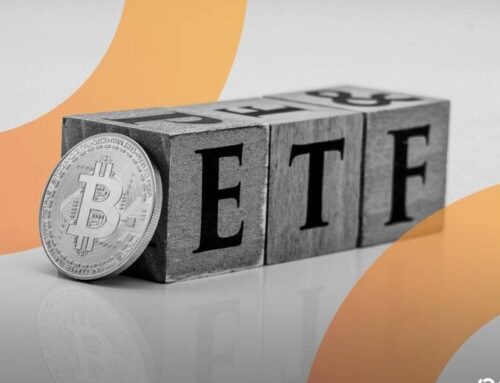Solana vs. Ethereum: Performance, Architecture, and Potential
November 5, 2025
Nov 5, 2025
| Updated Nov 5, 2025
Read
8 min
Beginner

| KEY TAKEAWAYS: |
| — Ethereum employs a proof-of-stake (PoS) algorithm, while Solana combines proof-of-history (PoH) and PoS to create a hybrid model that maximizes both speed and security.
— While Ethereum prioritizes decentralization and security, Solana emphasizes scalability, albeit with a concentrated validator set, which elicits concerns regarding centralization. — Ethereum boasts superior security due to its large validator set, unlike Solana, which limits participation with sophisticated hardware demands. |
The blockchain arena features two prominent platforms, Ethereum and Solana, each with distinct architectural philosophies. Solana boasts of a theoretical maximum of 65,000 transactions per second (TPS) while maintaining transaction costs under a penny. Yet, Ethereum, a pioneer in smart contracts and dApps, commands the largest developer ecosystem and holds about $85 billion in DeFi protocols.
However, this isn’t just a technical rivalry. It’s a fundamental clash of philosophies with the potential to reshape how we interact with digital cash, art, and apps. But which one is right for your next DeFi project, NFT venture, or online gaming?
Though both Ethereum and Solana blockchains aim to revolutionize finance, digital ownership, and gaming, they take radically different paths. Understanding their differences, similarities, and use cases allows developers to determine the optimal blockchain for their next dApp, and users to select the most appropriate chain for their intended use case.
Let’s dig in to understand what makes these blockchains tick.
The fundamental challenge public blockchains aim to address is the blockchain trilemma – the belief that blockchains can only achieve two of three critical aspects (decentralization, security, and scalability) simultaneously. Most blockchains, including Bitcoin, prioritize security and decentralization but sacrifice speed.
Ethereum and Solana represent different approaches to solving this persisting puzzle. But first, what are they?
Originally launched in 2015, Ethereum stands as the pioneer of smart contracts and dApps. It serves as the home to a majority of the world’s most prominent DeFi protocols and NFTs. In addition, it ranks as the second most valuable cryptocurrency by market capitalization.
However, Ethereum’s popularity presented more challenges – as the number of users on the network increased, the transaction speeds declined, and the gas fees escalated. The Dencun and Pectra upgrades were recently implemented to lower transaction fees and improve throughput, addressing this issue.
On the other hand, Solana presents itself as an alternative to Ethereum, aiming to address the growing need for scalability and adapt to the evolving demands of the industry. Proposed in 2017 and launched in 2020, Solana offers rapid transactions and low costs, positioning itself to support decentralized and scalable applications.
Let’s explore the differences and similarities between these two platforms across various aspects, including blockchain architecture, performance, consensus mechanisms, and use cases.
Ethereum operates on a modular architecture that prioritizes security and decentralization over raw speed. Its base layer (layer 1) is responsible for maintaining high security standards and processing transactions, while its layer-2 (L2) solutions handle the heavy lifting of speed and cost reduction.
As such, the base layer validates the most critical operations (such as transaction settlement). The scaling solutions, such as rollups and sidechains, process routine transactions and settle the final results on the main network. This design ensures that even if L2 solutions encounter challenges, the core network remains secure and operational.
Ethereum’s modular philosophy extends to its development approach, encouraging diversity in scaling solutions, ranging from optimistic rollups to zero-knowledge (zk) rollups. It is this diversity that fosters a competitive ecosystem where varying scaling solutions can specialize in specific use cases.
Solana, known for its transaction speed and low costs, takes a monolithic approach in its attempt to solve scalability at the base layer itself. Instead of relying on external scaling solutions like its counterpart, it integrates innovative technologies directly into its core protocol.
To explain, Solana’s monolithic, single-layer design ensures all core functions (execution, consensus, and data availability) are handled within a single blockchain. This design allows it to prioritize high speeds, throughput, and low latency.
Compared to Ethereum’s modular approach, Solana’s unified structure allows it to offer a seamless user experience and enhances performance for applications that require real-time responsiveness. However, this also limits its flexibility, such as when attempting to upgrade individual components without affecting the entire chain.
In September 2022, the Ethereum network underwent one of the most significant transitions in blockchain history. Dubbed “The Merge,” Ethereum shifted from its former energy-intensive Proof of Work (PoW) to Proof of Stake (PoS) consensus mechanism.
This historical shift drastically reduced the network’s energy consumption by ~99.95%, while laying the foundation for future scalability upgrades. The Merge allowed Ethereum to improve its security through economic incentives rather than computational power.
Validators stake 32 ETH each. The protocol pseudo-randomly selects proposers and attesters from the active validator set each slot, so every 32-ETH validator has roughly equal chance of being chosen, independent of how long it’s been staked
The validators are responsible for proposing blocks, while committees (a group of validators assigned to specific duties, such as proposing or attesting to blocks) confirm the validity of the proposed blocks. The network’s overall health aligns with validator incentives, such that malicious conduct leads to slashing (loss of staked tokens)
Solana utilizes a unique blend of two consensus mechanisms – PoS and Proof of History (PoH) – to create a hybrid model that maximizes both speed and security. PoS provides Solana with economic security through staking, while PoH serves as a cryptographic clock that timestamps transactions before validators process them.
While most traditional blockchains require extensive communication between validators to agree on transaction ordering, this hybrid algorithm eliminates the coordination overhead between nodes to facilitate parallel processing. This parallelization capacity gives Solana an architectural edge over Ethereum in terms of scalability, increasing its transaction speed to a theoretical capacity of 65,000 TPS.
Unlike Ethereum’s modular design, Solana employs a single-layer architecture, where all transactions are processed on the base layer. Its monolithic design reduces complexity for developers and users while maximizing performance, albeit with network resilience and decentralization trade-offs.
Solana also employs a parallel execution engine, called the Sealevel mechanism, to ensure multiple smart contracts run in parallel without overlapping. As a result, Solana can handle thousands of transactions simultaneously, dramatically increasing throughput compared to sequential execution models.
The performance gap between these platforms is apparent yet logical. Ethereum’s base layer, for instance, processes approximately 15 – 30 transactions per second, and its L2 solutions like Arbitrum achieve 40,000 TPS (theoretically). Polygon, a popular Ethereum sidechain, reaches approximately 1000 TPS.
Solana often operates in the low-thousands TPS, with a theoretical design target of 65,000 TPS on its main network, with burst capacity reaching much higher levels during optimal conditions. This high TPS is thanks to its parallel processing capacity, where validators run smart contracts in parallel, and efficiency gains from its PoH algorithm.
However, raw speed tells only half the story. While Solana’s speed clearly eclipses Ethereum’s, the Ethereum base layer transactions enjoy a higher level of security. Its L2 transactions also inherit this security through fraud proofs or validity proofs, but with some trade-offs in immediate finality.
Another notable disparity between Solana and Ethereum is the difference in transaction fees, which are required to process transactions and execute smart contracts.
Historically, Ethereum’s slower transaction speeds led to high network congestion and increased transaction fees during peak times. The high transaction costs made performing even smaller transactions infeasible and costly to interact with dApps, an issue addressed by the Dencun and Pectra upgrades.
Solana, on the contrary, consistently maintains low transaction costs, often a mere fraction of a cent. Its low fees are a result of its high TPS, which attracts developers and users dealing with microtransactions, frequent dApp interactions, or frustrated by Ethereum’s gas costs.
To put this into perspective, Ethereum’s variable fees create a market for block space, ensuring the network remains profitable for validators during high demand. On the contrary, Solana’s consistent low fees prioritize user experience and application usability.
As these networks continue to evolve, addressing transaction costs remains a primary concern. While Solana works to preserve its low-cost advantage, Ethereum is actively developing scaling solutions to lower fees and increase speed.
Ethereum’s security superiority comes from its large validator set (over a million validators) and substantial economic stakes. This extensive validator distribution makes Ethereum highly resistant to 51% attacks or regulatory pressure, since compromising the network would require collusion across hundreds of thousands of independent nodes.
Solana, on the other hand, takes a different approach from Ethereum, prioritizing scalability and usability. And while this yields superior performance, it results in a more concentrated validator set. The high hardware requirement imposed on validators might restrict participation to validators with specialized setups. This concentration tilts Solana toward centralization and increases the risk of potential attack vectors.
Another distinguishing characteristic of these platforms is their reliability and stability. For instance, Ethereum has consistently demonstrated exceptional reliability since its inception, typically experiencing very few network outages in its history. This sustained stability reflects its conservative approach to protocol changes and its security-centric design philosophy, which favors network resilience over performance optimizations.
Conversely, Solana has encountered several notable outages, mainly due to software vulnerabilities, patching issues, or transaction spam. These incidents often result in partial or extended network downtime, underscoring the inherent trade-offs in Solana’s performance-oriented design.
Solana’s powerful hardware requirements for validators have led to a concentration of validators, risking potential centralization. With about a few thousand validators, the network employs a stake-weighted selection mechanism that can concentrate influence among large stakeholders. However, it utilizes a delegation mechanism that allows smaller participants to influence validator selection, preventing dominance by a few large entities.
With over 1 million validators distributed globally, Ethereum creates one of the most decentralized blockchain networks. Like Solana, its governance is through off-chain discussions and on-chain implementation, where its core developers, researchers, and community members contribute to decision-making processes.
Solana’s use cases overlap with Ethereum’s to some extent, such as dApp development, DeFi, NFTs, and DAOs. However, each platform is particularly well-suited for different applications.
Some of the top Ethereum use cases include:
- Complex smart contracts – Ethereum’s mature developer tools and extensive auditing experience bolster the development of applications that require sophisticated contract logic or advanced cryptographic techniques.
- Institutional applications – Institutions that prioritize regulatory compliance and security opt for Ethereum due to its established infrastructure and robust network effects.
- High-value DeFi protocols – DeFi applications that handle substantial value benefit from Ethereum’s robust security and high liquidity across different protocols.
In contrast, Solana excels in:
- High-frequency applications – Due to its high throughput, Solana is well-suited for applications that demand sub-second execution and minimal transaction costs, such as DEXs and gaming apps.
- Real-time applications – DApps that rely on real-time interactions or instant settlement perform better on Solana’s high-throughput architecture compared to Ethereum.
- Microtransactions and tokenization – The platform supports applications that would otherwise be economically infeasible on higher-cost networks. As such, projects involving frequent micro-transactions or massive tokenizations leverage its low-cost structure and speed.
- Consumer-scale applications – Use cases such as gaming, social media apps, and other consumer-facing dApps benefit significantly from Solana’s low fees and seamless user experience.
Ethereum’s long-standing existence has nurtured a rich developer support system, complete with developer grants, hackathons, and educational resources. Its expansive community of contributors also ensures a consistent influx of innovation. Ethereum’s developer tools and significant events, such as ETHGlobal, consistently draw talent and propel the creation of novel applications.
The platform supports multiple programming languages, such as Python, Vyper, and JavaScript, with Solidity being the most popular for smart contract development.
Meanwhile, Solana has augmented its developer support via its Solana Foundation initiative. This includes hackathons and educational programs, such as mtnDAO, to attract and retain developers by providing a platform for high-speed, scalable dApp development.
It prioritizes a seamless developer experience, particularly for those creating high-performance apps like DeFi apps and gaming. Among other programming languages, it primarily utilizes Rust and TypeScript, complemented by robust software development kits (SDKs). Simply, it provides developers with readily available tools to boost development without requiring extensive low-level programming knowledge.
ETH has a structurally lower issuance plus fee burning, which can make supply deflationary at high activity, but not guaranteed at all times. The protocol burns a portion of transaction fees rather than distributing them entirely to validators. This mechanism creates deflationary pressure during high network activity, potentially making ETH more scarce over time.
The fee structure includes a base fee (burned) and priority fees/tips – the amount you pay to incentivize validators to prioritize your transaction and include it in their proposed block. This dual mechanism ensures network security while creating economic value for ETH holders through fee burning. During peak network times, the burning rate may outpace the issuance of new ETH.
Ethereum’s staking rewards typically yield about 3–5% annually, providing income for long-term holders while securing the network. The reward structure strikes a balance between network security incentives and sustainable token economics.
Solana is partially inflationary and not fully deflationary. In other words, it incorporates deflationary mechanisms that balance its inflationary nature.
To explain, Solana maintains a predictable inflation schedule. Initially set at 8% annual inflation rate, this rate decreases by 15% annually (called the disinflation rate) until it reaches a fixed inflation rate of 1.5%. This schedule provides predictable rewards for validators and stakers while avoiding excessive token dilution.
All inflationary issuances are allocated to token holders based on their staked SOL, in addition to the validators who receive commissions from the rewards generated by the delegated SOL.
However, the actual inflation is influenced by factors such as token burning, lost private keys, and slashing events. The token-burning mechanism burns a portion of each transaction fee, thereby counteracting inflation and fostering scarcity. The validator processing the transaction keeps the remaining fees.
Solana’s staking yields typically range from 4 – 8% annually, higher than Ethereum’s rewards but offset by ongoing token inflation. The platform allows liquid staking through various protocols, enabling stakers to maintain liquidity while earning rewards.
The economic model reflects Solana’s focus on user adoption over speculative value creation. The low fees encourage usage and application development, while predictable inflation provides sustainable validator incentives.
Interoperability has become a fundamental principle in blockchain development, with users and developers increasingly demanding smooth movement of assets across chains.
Ethereum serves as the hub for most cross-chain activity, with several bridging solutions and layer 2 protocols. For instance, Polygon alleviates congestion on the Ethereum mainnet by processing transactions off-chain. However, Ethereum still serves as the primary settlement layer, extending its security, liquidity, and user base to other chains.
Major bridges, such as Polygon’s PoS Bridge and Arbitrum’s bridge, facilitate asset and token transfer between Ethereum and scaling solutions, further enabling cross-chain compatibility.
Solana connects to other networks primarily through bridges. Bridges like Wormhole, for instance, facilitate asset transfers between Solana and multiple other blockchains, including Ethereum and BNB Smart Chain. The platform’s fast finality makes it attractive for cross-chain applications requiring quick settlement. What’s more, its integration of the Cross-Chain Messaging Protocol (CCMP) further enhances its interoperability with other blockchains.
However, cross-chain bridges are not without their challenges. Their existence doesn’t necessarily guarantee the security that on-chain activities enjoy. For example, bridges like the Ronin Network and Wormhole Bridge have lost millions of dollars due to smart contract flaws or private key compromises.
Ethereum currently leads the blockchain industry with a robust ecosystem and wider market adoption. As a pioneer in the DeFi sector, Ethereum hosts over 5,000 dApps, including Aave, Uniswap, and MakerDAO. Its market dominance extends to the NFT sector as well, with popular collections, such as CryptoPunks, Bored Ape Yacht Club, and Pudgy Penguins, hosted on the network.
Besides its substantial market share, major corporations and financial institutions are increasingly adopting Ethereum for various use cases. The platform hosts numerous enterprise applications from supply chain tracking to digital identity solutions. JPMorgan’s JPM Coin, despite operating on a permissioned Ethereum fork, demonstrates institutional confidence in Ethereum’s architecture.
Moreover, its established compliance frameworks and regulatory clarity in many jurisdictions make it attractive for institutional adoption. Its predictable upgrade schedule and conservative development approach provide the stability enterprises require for long-term planning.
Additionally, the US sanctioning spot Ethereum exchange-traded funds (ETFs) in July 2024 spurred increased institutional adoption and an influx of capital from the traditional finance (TradFi) market.
Although novel to the institutional arena, Solana has rapidly attracted organizations seeking blockchain solutions offering high-throughput and low-cost transactions. Trading firms and financial institutions exploring high-frequency dApps, for instance, often evaluate Solana for its performance characteristics.
Solana’s growing ecosystem of institutional-grade infrastructure providers, including custody solutions and compliance tools, supports broader adoption by enterprises. These services address institutional requirements for security, compliance, and operational excellence.
With that said, several TradFi players have launched products on Solana, attracted by its speed and cost advantages. Its strides in institutional adoption are highlighted by its collaboration with payment leader Visa, allowing cardholders to use Solana-based stablecoins to settle transactions. Furthermore, the approval of Solana ETFs in Canada and the US earlier this year favors Solana’s institutional adoption efforts.
Ethereum fostered and continues to dominate the NFT market, with platforms like OpenSea, Foundation, and SuperRare facilitating billions in trading volume. The platform’s established standards make it suitable for high-value digital art and collectibles.
In fashion, gaming projects on Ethereum focus on asset ownership and interoperability, with games like Axie Infinity and The Sandbox creating extensive economies around NFT-based items and characters. Its security makes it suitable for high-value gaming assets that players expect to retain long-term value.
To summarize, the platform’s mature marketplace infrastructure and established user base provide significant advantages for projects launching digital collectibles or gaming assets, ensuring broad market access and liquidity.
Solana’s speed and low costs make it ideal for gaming applications requiring frequent interactions and micro-transactions. It enables games to implement complex mechanics, such as real-time on-chain battles and frequent reward distributions, without prohibitive transaction costs.
Projects like STEPN and Star Atlas demonstrate Solana’s capability to support massive multiplayer experiences with blockchain integration. Put another way, the platform enables gaming mechanics impossible on higher-cost networks.
Solana’s NFT ecosystem grows rapidly, with platforms like Magic Eden providing fast, low-cost trading experiences. In addition, its speed enables innovative features like real-time auction mechanisms and dynamic NFT properties that update based on on-chain events.
The Merge reduced Ethereum’s energy consumption by approximately 99.95%, transforming it from one of blockchain’s most energy-intensive networks to one of the most energy-efficient. This dramatic improvement addressed major environmental concerns and removed barriers to adoption by environmentally conscious users and institutions.
Ethereum’s PoS typically requires minimal computational resources compared to its pre-Merge mining, with validators able to operate on standard consumer hardware. This efficiency extends to the entire ecosystem. For example, L2 solutions further reduce per-transaction energy consumption by bundling multiple transactions off-chain and submitting them as a single batch to the main network.
The network’s energy efficiency continues to improve through optimizations in client software and validator efficiency improvements. These ongoing enhancements aim to further reduce the environmental footprint of the entire ecosystem.
Solana designed energy efficiency into its core architecture, avoiding the energy-intensive PoW mining that characterized earlier blockchain networks. The platform’s PoS and PoH consensus, combined with efficient hardware utilization, creates a relatively low environmental impact. Its PoH consensus minimizes the data in transactions by not broadcasting timestamps across the network, which accelerates transaction processing.
As of this writing, Solana’s energy consumption ranges between 0.0067 to 0.0085 watt-hours (Wh) per transaction – less than operating an LED light bulb for an hour (0.01 kWh). The platform’s high throughput means this efficiency scales with increased usage.
The blockchain’s development team actively works on further efficiency improvements, optimizing both the protocol and recommended hardware specifications to minimize energy consumption while maintaining performance advantages.
Ethereum’s development roadmap focuses on completing its transition to a fully scalable, sustainable platform that solves the blockchain trilemma. Key completed or ongoing improvements such as proto-danksharding (a step toward full sharding), account abstraction work, and continued L2 expansion.
The platform’s research-driven approach emphasizes long-term sustainability over rapid feature deployment. As such, Ethereum researchers publish extensive documentation on proposed improvements, subjecting changes to peer review and community discussion.
Fusaka upgrade, one of the upcoming upgrades, aims to augment L2 data capacity and make running nodes more accessible. This improvement will also enable forks to adapt faster to L2 scaling needs. Further upgrades, such as single-slot finality (SSF), are expected to reduce block finalization times, substantially improving network efficiency and user experience.
Additionally, Ethereum aims to introduce Verkle trees, which will reduce the size of proofs a node requires to verify the network state. By facilitating stateless clients, Verkle trees will mitigate the storage burden on nodes, further improving scalability.
Solana continues pushing performance boundaries through hardware optimization and protocol improvements. The development team regularly implements upgrades through the Solana Improvement Document (SIMD) process, aimed at increasing throughput and reducing latency.
The Solana Foundation’s Token Extensions upgrade, for example, expanded the capabilities of Solana-based tokens, enabling more programmable and customizable tokens. Upcoming upgrades, such as Firedancer (a new validator client), are expected to enhance the network throughput, reliability, and further lower transaction costs.
Recent innovations include fee markets for priority transactions and improved congestion handling. The platform also explores integration with hardware acceleration and specialized networking protocols to maximize performance.
| Feature | Ethereum | Solana |
| Launch Year | 2015 | 2020 |
| Consensus Mechanism | PoS | PoS + PoH |
| Transaction Speed | 15 – 30 TPS on base layer and 40,000 TPS on Layer 2 | 2,000-4,000 TPS (up to 65,000 theoretical TPS) |
| Transaction Fees | Fluctuates based on network demand ($1–$50+ on the base layer) | < $0.001 (consistent) |
| Block Time | 12 seconds | 0.4 seconds |
| Architecture | Modular (Layer 1 + Layer 2 solutions) | Monolithic (single layer) |
| Programming Language | Solidity, Vyper, Yul+, Fe | Rust, TypeScript, C, C++ |
| Validators | 1,000,000+ | Few thousand |
| Staking Requirement | 32 ETH minimum | Variable SOL amounts |
| Total Value Locked (TVL) | $85 billion in DeFi | $10 billion in DeFi |
| Smart Contract Standards | ERC-20, ERC-721, ERC-1155 | SPL Token standard |
| Network Stability | Highly stable | Improving (some notable historical outages) |
| Developer Ecosystem | Largest and most mature | Growing rapidly |
| Upgrade Mechanism | Ethereum Improvement Proposals (EIPs) | Solana Improvement Documents (SIMD) |
| Hardware Requirements | Low (consumer hardware) | Higher (specialized hardware) |
| Community Focus | Security and decentralization | Performance and user experience |
| Development Philosophy | Conservative, research-driven | Rapid iteration, performance-focused |
| Future Scaling Plans | Sharding, Layer 2 expansion | Protocol optimizations, hardware scaling |
Ethereum and Solana depict two successful but fundamentally different approaches to blockchain architecture. Ethereum’s security-first, modular design creates a robust foundation for high-value applications, while Solana’s performance-optimized architecture enables new categories of consumer applications demanding speed and low costs.
The choice between platforms depends on specific requirements – Ethereum for maximum security and established infrastructure, Solana for high-throughput applications and user-friendly experiences. Ideally, both platforms continue evolving, with Ethereum advancing toward full scalability through Layer 2 ecosystems and Solana refining its performance advantages while improving stability.
Rather than competing directly, these platforms increasingly serve complementary roles in a diverse blockchain ecosystem, where users and developers alike determine the most suitable blockchain for their specific needs.
Search
RECENT PRESS RELEASES
Related Post




